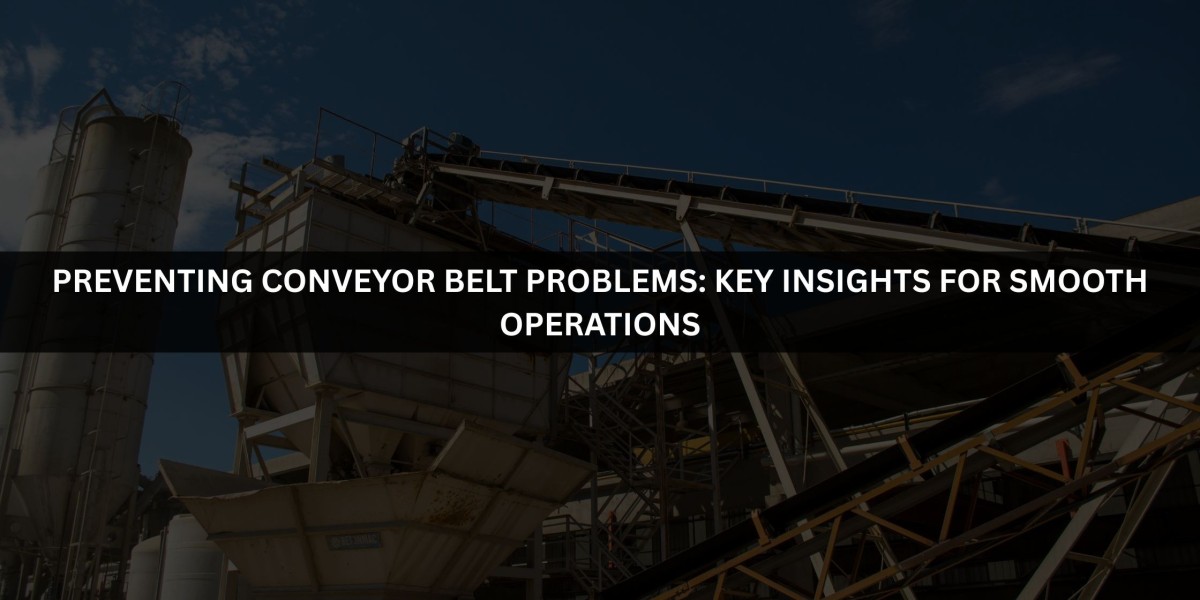Keeping Your Conveyor Belts Running Smoothly: Tips and Tricks
Conveyor belts are super important for businesses like mines, delivery companies, food factories, drug companies, and more. They make things easier, faster, and help move stuff around. But, like anything else, they can break down. Even small problems can stop everything, which costs time and money, and can be unsafe.
To keep things running well, it's key to know what can go wrong with conveyor belts and how to prevent it. Belt companies will tell you that taking care of your belts and using good materials can save you from a lot of trouble later on.
Belt Slipping: What Causes It?
One of the most typical problems is when the belt slips. This usually happens when the belt and the motor pulley don't have enough grip. This can be because the belt isn't tight enough, the pulleys are worn out, or there's oil, dirt, or water on the belt. For businesses that run 24/7, this really hurts how well things work and can damage the belt.
To stop slipping, keep an eye on how tight the belt is and check the pulleys often. Make sure everything is lined up right and clean the belts to remove any junk. Good belts usually have better grip and coatings to help stop slipping, even in tough spots.
Stuff Falling Off the Belt
Another issue is when stuff falls off the belt, which often happens when moving things like coal, cement, or grain. This can be because the belts aren't lined up right, the seals aren't tight, or the belt is carrying too much. Besides making a mess, this can also cause dust, damage to equipment, and safety issues.
The fix is to use belts that can handle the amount of stuff you're moving and keep the seals tight where the stuff moves from one place to another. Also, check the guards, belt cleaners, and loading areas regularly. Using what expert belt companies suggest can help keep stuff on the belt and make your system last longer.
Belt Moving Off Track
If a conveyor belt starts to wander, it can wear out unevenly, damage the edges, and even break down. This usually happens because of bad loading, misaligned parts, or stuff building up on the rollers. If you don't take care of it, it can really slow things down and cost more to fix.
To keep belts on track, line everything up carefully when you install them and check the balance regularly. Load things properly and keep the belts clean. Belt companies offer handy items like automatic trackers or guiding rollers, which are great for businesses that can't afford any downtime.
Too Much Wear and Tear
Conveyor belts wear out over time, but if it's happening too fast, there's probably a reason. Sharp objects, extreme temperatures, or chemicals can all cause damage. In places like mines and construction sites, belts are constantly under stress, which can lead to cracks, cuts, or stretching that shortens their life.
To deal with this, use belts made for the specific conditions. For example, use heat-resistant belts in cement factories and food-safe belts where hygiene is important. Getting the right belts from reliable companies makes them last longer and reduces how often you have to replace them. Also, check them regularly and fix problems quickly.
Loud Noises and Shaking
If your conveyor belt is making a lot of noise or shaking, something's wrong. It could be misaligned parts, worn-out bearings, or an unbalanced structure. Besides being annoying, constant shaking can weaken the belt and be dangerous.
To prevent this, grease things regularly, check for worn parts, and make sure the bearings and rollers are installed correctly. For places that need to be quiet, like drug companies or food factories, belt companies can suggest special designs that keep things running smoothly and quietly.
Safety Risks and Overheating
Conveyor belts can be dangerous if they aren't taken care of. Frayed edges, exposed parts, or motors that overheat can put workers at risk. Overheating belts can also break down faster or even cause fires in extreme cases.
Businesses need to focus on safety by doing regular checks, adding protective guards, and training workers on how to shut things down in an emergency. Using belts made with high safety standards from trusted companies helps lower these risks and meets industry rules.
Focus on Keeping Things Maintained
The best way to prevent conveyor belt problems is to make maintenance a priority. Check things regularly, clean them, and replace worn parts quickly to keep things running without interruption. Maintenance should be done regularly, not just when something breaks down, to reduce downtime and increase productivity.
Belt companies often suggest using technologies like sensors to spot problems early. This way, you can fix small issues before they become big ones. Working with experienced belt companies can also give you access to expert advice and support.
Building a Dependable System for the Future
Conveyor systems are important for businesses around the world, and how well they work affects how profitable they are. Common problems like slipping, spillage, mistracking, and wear might seem unavoidable, but with the right plan, they can be prevented. Using good belts, designing the system well, and committing to maintenance will ensure efficiency.
Explore: Conveyor Belt Manufacturers
As businesses get more advanced, using better solutions and working with reliable belt companies will be key to keeping things running smoothly. By focusing on durability, safety, and efficiency, businesses can make their conveyor systems a source of growth.








